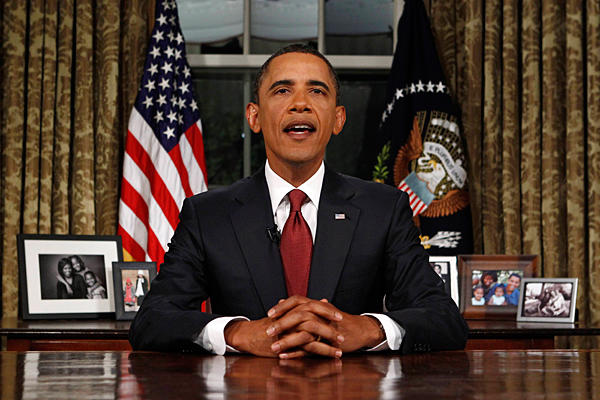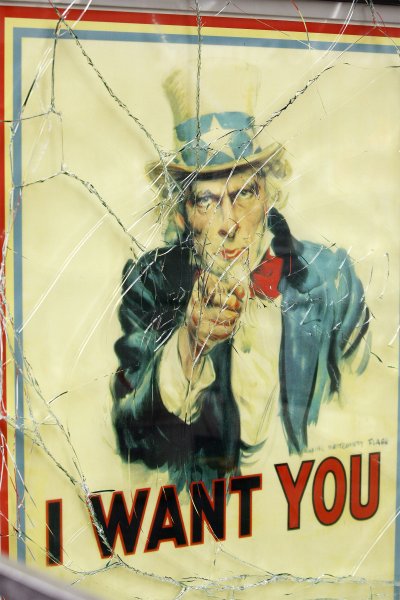With protests in Charlotte and the shooter of Terence Crutcher in Tulsa being charged with manslaughter, the question of systemic racism and #BlackLivesMatter has risen again. The following is meant to be a helpful list of relevant data regarding the current state of police force and racial bias:
- The Rarity of Force: According to the U.S. Department of Justice, it is “[k]nown with substantial confidence…that police use force infrequently. The data indicate that a small percentage of police-public encounters involve force. For example, about 1 percent of people who had face-to-face contacts with police said that officers used or threatened force, according to preliminary estimates based on the Bureau of Justice Statistics’ 1996 pretest of its Police-Public Contact Survey…In 7,512 adult custody arrests, another study…notes that fewer than one out of five arrests involved police use of physical force (defined as use of any weapon, use of any weaponless tactic, or use of severe restraints). That can be considered a low rate in view of the study’s broad definition of force” (pg. vii). By highlighting this first, “the intention is neither to minimize the problem nor to suggest that the issue can be dismissed as unworthy of serious attention. Society’s ends are best achieved peaceably, and we should strive to minimize the use of force by police as much as possible. However, it is important to put police use of force in context in order to understand the potential magnitude of use-of-force problems. Although estimates may not completely reassure everyone that police are doing everything they can to minimize the use of force, the data do not support the notion that we have a national epidemic of police violence” (pg. 3). In summary, the vast majority of civilian/police interactions involve no violence whatsoever.
- Increase in Police Shootings: However, the above study was done in 1999. Both private and federal data since then suggest that the use of lethal force by police is increasing (see the graph below). Nonetheless, even with upticks in killings by police, the use of lethal force would still be exceedingly rare.

- Lack of Prosecution: Very few officers have been prosecuted for fatal shootings since 2005 according to a 2015 analysis by The Washington Post. This could very well be for good reasons, but the point is that it is rare for an officer to face prosecution.
- Police Officers Are Safer: Murders, assaults, and shootings of police officers have thankfully declined over the last few decades (for example, see the graph on assaults and injuries below). We should want to keep it that way.

- Unreliable Data: Unfortunately, the data on use of force by police aren’t very helpful. Reporting on a 2013 survey conducted by the Justice Department, The New York Times stated, “But when the data was issued…the figures turned out to be almost useless. Nearly all departments said they kept track of their shootings, but in accounting for all uses of force, the figures varied widely. Some cities included episodes in which officers punched suspects or threw them to the ground. Others did not. Some counted the use of less lethal weapons, such as beanbag guns. Others did not. And many departments, including large ones such as those in New York, Houston, Baltimore and Detroit, either said they did not know how many times their officers had used force or simply refused to say. That made any meaningful analysis of the data impossible.” USA Today found similar problems. For example, University of Nebraska criminologist Samuel Walker said that the uptick in police shootings could simply be due to more departments reporting. The Washington Post‘s Radley Balko summarizes, “The point is, it’s nearly impossible to know all the details behind all of these shootings. We have to rely on reports filed by the officers themselves. We know more details about these particular cases because an attorney or a journalist took the time to investigate, file open records requests, and look beyond the police reports and press accounts (which, less face it, too often are too reliant on the police reports).”
- Individual Racism: Rhetoric from critics of police sometimes gives the impression that police shootings of blacks stem from individual racism. According to a 2015 survey, 12.2% of all U.S. local police officers are black. Interestingly enough, one study found that black officers are 3.3 times more likely to discharge their weapon than white officers on the scene of the same incident. A 2015 study of the Philadelphia Police Department by the U.S. Justice Department found that black officers had a threat perception failure (TPF) rate of 11.4% with black suspects, while white officers’ TPF rate was only 6.8% with black suspects (see pg. 32). A Washington State University study found that “[p]articipants were…more likely to shoot unarmed white suspects than black or Hispanic ones and more likely to fail to fire at armed black suspects. “In other words,” wrote [Lois] James and her co-authors, “there was significant bias favoring blacks where decisions to shoot were concerned.” When confronted by an armed white person, participants took an average of 1.37 seconds to fire back. Confronted by an armed black person, they took 1.61 seconds to fire and were less likely to fire in error. The 240-millisecond difference may seem small, but it’s enough to be fatal in a shooting.” The reason may be “rooted in people’s concerns about the social and legal consequences of shooting a member of a historically oppressed racial or ethnic group.” The case for individual racism in a general sense is hard to make.
- Systemic Racism: However, criticism from groups like Black Lives Matter and others are not so much focused on individual racism as they are on systemic racism. The claim is not that cops are individually racist (“some of those that work forces are the same that burn crosses“), but that the system in which they operate is biased against vulnerable black communities. For example, The New Jim Crow: Mass Incarceration in the Age of Colorblindness by Ohio State University law professor Michelle Alexander details how the War on Drugs disparately impacts black and poor communities more than white and prosperous ones. Blacks are far more likely to be charged with and convicted of drug crimes, yet blacks use drugs at roughly the same rates as whites while being less likely to sell. While this doesn’t address violent crimes–of which blacks commit a disproportionate amount–it’s worth noting that drug crimes “have been the predominant reason for new admissions into state and federal prisons in recent decades.” Nathaniel has an excellent review here, which covers the book’s claims regarding racially-disparate stops, arrests, convictions, and consequences that come with the scarlet-F of a felony conviction.
- Black-on-Black Crime: This is a largely irrelevant talking point. According to the U.S. Department of Justice, 93% of black murder victims were killed by other blacks between 1980 and 2008. Similarly, 84% of white murder victims were killed by other whites (pg. 13; see graph below). In other words, most violent crime is intraracial. Furthermore, the Bureau of Justice Statistics found that–between 2008 and 2012–those “in poor households at or below the Federal Poverty Level (FPL) (39.8 per 1,000) had more than double the rate of violent victimization as persons in high-income households (16.9 per 1,000).” It turns out that “[p]oor urban blacks (51.3 per 1,000) had rates of violence similar to poor urban whites (56.4 per 1,000).” Between 2007 and 2011, the black poverty rate was 25.8 percent, while the white poverty rate was 11.6 percent. In short, poor whites and blacks commit violent crimes at about the same rate. There are just more poor blacks than poor whites. And considering that there is strong empirical support for poverty as a predictor of crime, lifting communities out of poverty may be one of the best crime prevention programs.

- Stops, Searches, Arrests: Numerous studies find that blacks are stopped and searched at far higher rates than whites. A July 2016 report on police practices in San Francisco found that statistics “suggest there are racial disparities regarding SFPD stops, searches, and arrests, particularly for Black people.” Black adults were 7 times more likely to be arrested than whites along with having higher rates of searches without consent after stops and lower hit rates (i.e., rate at which searches turn up contraband). The Justice Department’s 2015 investigation into Ferguson police behavior found that “African Americans are more than twice as likely as white drivers to be searched during vehicle stops even after controlling for non-race based variables such as the reason the vehicle stop was initiated, but are found in possession of contraband 26% less often than white drivers, suggesting officers are impermissibly considering race as a factor when determining whether to search” (pg. 4). A 2016 study of Chicago PD found that “black and Hispanic drivers were searched approximately four times as often as white drivers, yet CPD’s own data show that contraband was found on white drivers twice as often as black and Hispanic drivers” (pg. 9). A 2014 ACLU analysis of Illinois Department of Transportation data found that “African American and Latino drivers are nearly twice as likely as white drivers to be asked during a routine traffic stop for ‘consent’ to have their car searched. Yet white motorists are 49% more likely than African American motorists to have contraband discovered during a consent search by law enforcement, and 56% more likely when compared to Latinos.” A New York Times analysis found that officers in Greensboro, N.C. were “were more likely to stop black drivers for no discernible reason. And they were more likely to use force if the driver was black, even when they did not encounter physical resistance.” A 2016 Justice Department investigation of Baltimore PD found that “BPD engages in a pattern or practice of making stops, searches, and arrests in violation of the Fourth and Fourteenth Amendments and Section 14141. BPD frequently makes investigative stops without reasonable suspicion of people who are lawfully present on Baltimore streets. During stops, officers commonly conduct weapons frisks—or more invasive searches— despite lacking reasonable suspicion that the subject of the search is armed. These practices escalate street encounters and contribute to officers making arrests without probable cause, 36 often for discretionary misdemeanor offenses like disorderly conduct, resisting arrest, loitering, trespassing, and failure to obey” (pg. 24). It also found that “BPD disproportionately stops African Americans standing, walking, or driving on Baltimore streets. The Department’s data on all pedestrian stops from January 2010 to June 2015 shows that African Americans account for 84 percent of stops55 despite comprising only 63 percent of the City’s population. Expressed differently, BPD officers made 520 stops for every 1,000 black residents in Baltimore, but only 180 stops for every 1,000 Caucasian residents. The high rate of stopping African Americans persists across the City, even in districts where African Americans make up a small share of the population. Indeed, the proportion of African-American stops exceeds the share of African-American population in each of BPD’s nine police districts, despite significant variation in the districts’ racial, socioeconomic, and geographic composition” (pg. 48-49). This was true for traffic stops as well: “BPD likewise stops African-American drivers at disproportionate rates. From 2010–2015, African Americans made up 82 percent of people stopped by BPD officers for traffic violations, compared to only 60 percent of the City’s driving age population. As with pedestrian stops, BPD stopped a higher rate of African American drivers in each of the City’s districts, despite large differences in those districts’ demographic profiles and traffic patterns. For example, African Americans accounted for 80 percent of vehicle stops in the Northern District despite making up only 41 percent of the district’s population, and made up 56 percent of stops in the Southeast District compared to only 23 percent of the population living there” (pg. 52). And yet, BPD hit rate data “suggests that officers’ search decisions are biased against African Americans. Indeed, BPD’s data on all stops from 2010–2015 shows that searches of African Americans have significantly lower hit rates than other searches. During vehicle stops, BPD officers reported finding some type of contraband less than half as often when searching African Americans—in only 3.9 percent of searches of African Americans, compared to 8.5 percent of other searches” (pg. 53). A 2011 Justice Department report found, in 2008, that whites, blacks, and Hispanics were stopped at about the same rate, yet blacks were searched about 3 times more than whites (pg. 10). A 2016 study of North Carolina’s database found “that black drivers (men and women) are 75% more likely to be searched than whites, 5% less likely to be ticketed, and 43% more likely to be arrested…In 2002, black men were 70% more likely to be searched than whites and this disparity has grown steadily over the period of study. Beginning in 2007, black men were twice as likely to be searched and by 2013 this difference had grown to over 140%. Black men are also more likely to be arrested; however, this disparity has remained stable at about a 60% increased likelihood. We also see that black men are marginally less likely to receive citations and there is almost no variance; NC police are highly consistent over time in their relative treatment of whites and black men when it comes to ticketing…Compared to white men, black men are more likely to be searched and arrested for every type of stop, with the exception of driving while impaired” (pg. 10). According to the database, “[i]n 2002, officers were almost 125% more likely to search black men than white men using a probable cause search. By 2013, officers were almost 250% more likely to use probable cause as a justification for searching blacks – essentially doubling the disparity in the use of probable cause searches. Tracking the contraband hit rate associated with this type of search reveals that officers’ suspicions of wrongdoing have always been less accurate when engaging with black motorists; officers consistently find contraband on black males at modestly lower rates than white males. So the increased reliance on probable cause to search blacks is not associated with more accurate assessments of the likelihood of blacks engaging in criminal behavior. And the increased racial disparities in probable cause searches over time appear to be unjustified in terms of any increased likelihood of finding contraband” (pg. 13).
- Driving Patterns and Traffic Violations: Are there alternative reasons for these stops besides racial bias and is there any evidence for them? The National Institute of Justice finds three potential reasons that blacks are pulled over at higher rates based on various studies: (1) “The representation of minority drivers among those stopped could differ greatly from their representation in the residential census. Naturally those driving on the road, particularly major thoroughfares, could differ from those who live in the neighborhood”; (2) “If minority drivers tend to drive in communities where there are more police patrols then the police will be more likely to notice any infractions the black drivers commit”; (3) Seatbelt usage is chronically lower among black drivers. If a law enforcement agency aggressively enforces seatbelt violations, police will stop more black drivers.” As a Washington Post article concludes, “Ethics aside, this is where the research leaves us: Black drivers certainly get more face-time with traffic cops. But to what extent that reflects discrimination, and whether that discrimination is based in racial prejudice, is more of an open question.”
- Unarmed Shootings: A 2015 study found “the median probability across counties of being {black, unarmed, and shot by police} is 3.49 (PCI95: 1.77, 6.04) times the probability of being {white, unarmed, and shot by police}.” However, some are hesitant to declare racial bias due to the amount of violent crimes in black communities. Blacks are more likely to be stopped and therefore more likely to end up in a violent conflict with police due to heavier policing of these crime-ridden areas. Yet, the evidence seems to be against this line of reasoning. The study found “no evidence of an association between black-specific crime rates (neither in assault-related arrests nor in weapons-related arrests) and racial bias in police shootings, irrespective of whether or not other controls were included in the model. As such, the results of this study provide no empirical support for the idea that racial bias in police shootings (in the time period, 2011–2014, described in this study) is driven by race-specific crime rates (at least as measured by the proxies of assault- and weapons-related arrest rates in 2012).” Similarly, another 2015 analysis found that the levels of violent crime in US cities had no correlation with that area’s police killing rates. However, just because one is unarmed does not make one a non-threat or the intended target. Some unarmed shooting victims attempt to wrestle the officer’s gun away from them, while others are unfortunate and unintended collateral damage (e.g., caught in crossfire). How threatening blacks are–armed or unarmed–is one variable controlled for in a new study analyzing The Washington Post‘s 2015 database. The study “used multivariate regression models to determine whether the findings were attributable to race or another factor and found that, among the 990 civilians fatally shot by the police last year, black civilians were more than twice as likely as white civilians to have been unarmed. This was true after controlling for threat level, the age and gender of the civilian, signs of mental illness, region of the United States, crime rate according to 2012 UCR data, size of the agency involved, and whether or not the agency operates its own basic training academy. In fact, the only other variable that was significant was, not surprisingly, threat level (meaning civilians in the “attack” category were far less likely to have been unarmed). In regards to the relationship between race and threat level, the data indicate that black civilians were not significantly more or less likely to have been attacking the police officer(s) or others than white civilians. However, Hispanic or Latino civilians and civilians from other minority groups were much less likely to have been attacking the police officers or others than white civilians. Again, these results held up after controlling for the influence of each of the other variables” (italics mine). However, it is paramount to note that the study found that the “majority of civilians shot and killed by the police in 2015 were male (96 percent), armed with a deadly weapon (82 percent), and attacking police officers or others (74 percent). Half of the civilians were white (50 percent). About one out of every four civilians fatally shot by police displayed signs of mental illness.” While bias in shootings is an extremely important issue and should be investigated, it is absolutely essential to remember that the majority of police shootings are due to legitimate threats. These are the kinds of incidents that provoke the #BlueLivesMatter counter. It is also worth acknowledging Harvard economist Roland Fryer’s recent study, which found no racial bias in police shootings across 10 major police departments in Texas, California, and Florida (check out The New York Times write-up and follow-up). However, there have been significant criticisms of Fryer’s study.
- Non-Lethal Force: Yet, Fryer’s study also found that officers were far more likely to use non-lethal force on blacks than whites, including hands on civilians (e.g., slapping or grabbing), pushing into a wall, use of handcuffs, drawing weapons, pushing to the ground, pointing weapon, pepper spraying, and striking with a baton (see graph below). A July 2016 study found that the mean rate of use-of-force incidents “for Black residents was 273 per 100,000, which is 2.5 times as high as the overall rate and 3.6 times as high as the rate for White residents (76 per 100,000)” (pg. 15). It also concluded “that crime rates are an insufficient explanation for disparities in the application of police force” (pg. 18).
This material doesn’t even get into post-arrest injustices like harsher sentences for blacks or historical issues like redlining, but I think this list is a good starter. As you wade into the controversies and debates, try to be as accurate as possible. Know the numbers. Be rigorous. Be willing to admit it when the evidence doesn’t favor “your side.” Most of all, be charitable towards one another. These are people’s lives, both black and blue. We want a system that is just and serves all members of society fairly. And we want officers coming home safely to their families at the end of the day.









